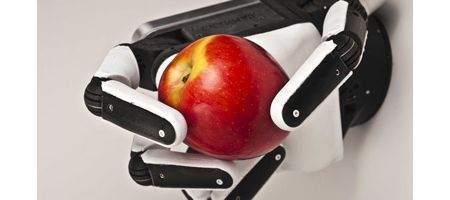Sandia National Laboratories has built a robotic hand designed for disarming improvised explosive devices, or IEDs, that’s so flexible it can even repair itself.

The Sandia Hand, says the team, is durable and dexterous, and should come in at a much lower price than existing models.
“Current iterations of robotic hands can cost more than $250,000. We need the flexibility and capability of a robotic hand to save human lives, and it needs to be priced for wide distribution to troops,” says Sandia senior manager Philip Heermann.
The operator controls the robot hand with a glove. Its tough outer skin covers a gel-like layer to mimic human tissue. It’s modular, so that different types of fingers can be attached with magnets and quickly plugged into the hand frame – along with other tools, such as flashlights, screwdrivers or cameras.
This modularity also makes the Sandia Hand more durable, as the fingers are designed to fall off should the operator accidentally run the hand into something hard.
“Rather than breaking the hand, this configuration allows the user to recover very quickly, and fingers can easily be put back in their sockets,” says principal investigator Curt Salisbury.
“In addition, if a finger pops off, the robot can actually pick it up with the remaining fingers, move into position and resocket the finger by itself.”
The device should cost a fraction of existing versions.
“The Sandia Hand has 12 degrees of freedom, and is estimated to retail for about $800 per degree of freedom – $10,000 total – in low-volume production. This 90 percent cost reduction is really a breakthrough,” says Salisbury.
It could even help investigators track down the bomb-makers, as it allows devices to be disarmed without blowing them up. Careful dismantling could preserve evidence and lead to more arrests.






